Hi. Please let me introduce myself, my name is Brendan Burke and I am the newest addition to LAMP’s staff. As an Archaeologist and Logistics Coordinator I will be working with Chuck Meide and Sam Turner in the field and office to get the First Coast Maritime Archaeology Project going, working to develop the LAMP infrastructure, and to help keep things running smoothly here! Since I’ve been here since late June I’ve come to meet just about everybody here at the Lighthouse but I would like to share my background with you and introduce myself our blog community.
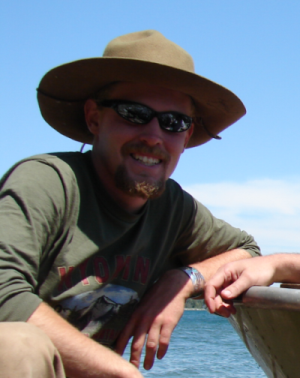
I first came to St. Augustine a little over a year ago as part of a trip to Savannah, Georgia. Coming from Williamsburg, Virginia. It was interesting to see St. Augustine as being very similar to Williamsburg. The historic nature of the area, as well as its heavy reliance on tourism, pedestrian-only historic streets, and colonial heritage was familiar to me and it felt like home.
Let me step back though, and explain a bit about my life before LAMP. Hailing from Amelia, Virginia, in the heart of tobacco country, I didn’t grow up on the water but got plenty of experience around old farm machinery and the backwoods of southside. Between 1999 and 2003 I attended Longwood University, a small state school west of Richmond, where I received my BA in anthropology and history. Post graduation I made my way over to William and Mary, in Williamsburg, Virginia, where I immediately began studies to complete a master’s degree in anthropology (with a focus on historical archaeology). It was here that I met Chuck, where we worked and studied together on numerous projects, including being part of the inaugural research trip to Achill Island, Co. Mayo, Ireland. I was also fortunate to have worked with Dr. Turner on a maritime research project along the inner reaches of the Delmarva Peninsula (also known as the Eastern Shore).
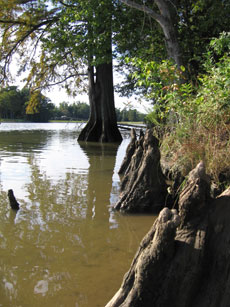
The Chickahominy River. This is where I was working on my thesis.
My central research focus at this time was on contact period (ca. 1607-1670+/-) in the Chesapeake Bay region. I investigated an early colonial site and concluded that it had been a serious trading center during the 1635-1670 period where indigenous people such as the Chickahominy, Pamunkey, and Mattaponi met English traders/yeomen to discuss and define the terms of Anglo encroachment into native lands. I also worked to re-discover lost trading routes through the region and was able to contribute to the region’s history by placing a long lost trading path back on the maps.
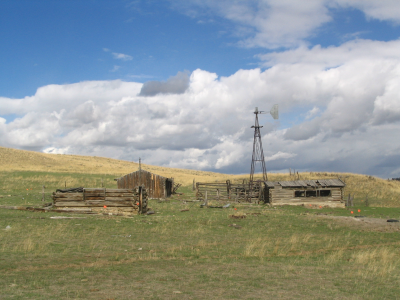
Without fish swimming around this, I’m not sure I’d recognize it anymore. We used to record old farmsteads like this. Wyoming has some pretty good visibility.
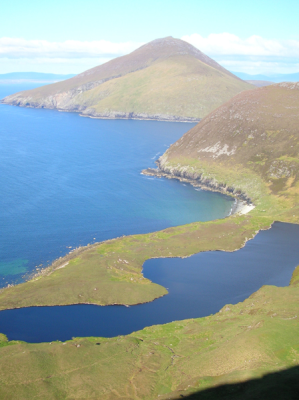
The Devil’s Cloak, Achill Island, Ireland. Chuck and I swam the entire length of Ireland’s lowest lying glacial lake looking for Bronze Age artifacts.
My work at William and Mary was concluded during the summer of 2006 when I graduated with an M.A. in Anthropology with a concentration in Historic Archaeology. Immediately I followed a dream of mine to head west and work in the contract, or business, side of archaeology. After a circuitous trip around the country I wound up in Sheridan, Wyoming and worked in the field as part of a survey crew. We walked miles and miles a day and saw some of the most amazing country and things, including having a standoff with a mountain lion. The wild and cold winter of northern Wyoming at high altitude cut off work there in late December. After briefly returning to Virginia for the holidays and to attend the Society for Historical Archaeology national conference back in Williamsburg, I moved to southern Utah and worked with a company on survey and excavation projects throughout Utah, Nevada, and got some really interesting experience in northern Arizona on Navajo and BLM lands.
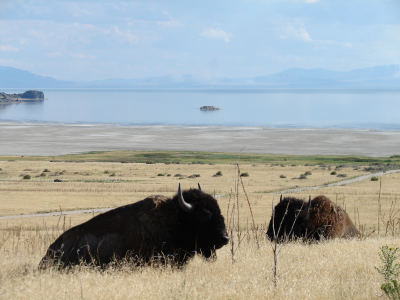
Hanging out on Antelope Island, part of the Great Salk Lake.
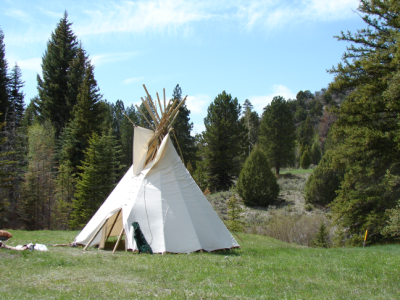
This was my portable house for a while. Camping in the Tushar Mountains, Utah.
My billeting out west ended abruptly early this summer as I traded the hiking boots, pack, and trowel for the swim fins, scuba tank, and dredge of LAMP. With the fortunate receipt of the Special Categories Grant, my position here at LAMP was solidified and I officially became a part of the team on July 1st.
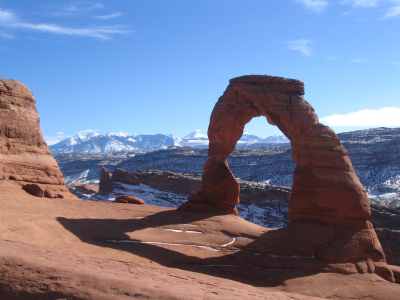
Delicate Arch. It will be a great swim-through soon with global warming.
Jumping right into the stream, the Flinders-LAMP field school was quite the experience for me as it was great to work with such a qualified and diverse group of people. Ever since, I’ve found my stride with LAMP in performing fieldwork, research, participating with and leading FC-MAP projects, and becoming part of the Lighthouse Family. I must admit the entire staff of full-timers, part-timers, and volunteers here at the lighthouse to be most welcoming, generous, and a great bunch of folks to work with!
My research interests here at LAMP include the documentation of maritime landscapes, in particular the fascinating history of the Tolomato Bar Anchorage. With loads of help from talented and dedicated volunteers we’ve already begun to create a digital history and set of interpretive maps. This work, I believe, will be an innovative step towards making the connexion of archaeology/public-engagement/history apparent and meaningful. I am also involved with other research projects around here as well as maintaining our small fleet of research vessels.
So, here we are and I’m looking forward to more adventures here at the St. Augustine Lighthouse!

The Mineral Mountains. Our crew got a chance to survey over this area before it all burned up this summer.

